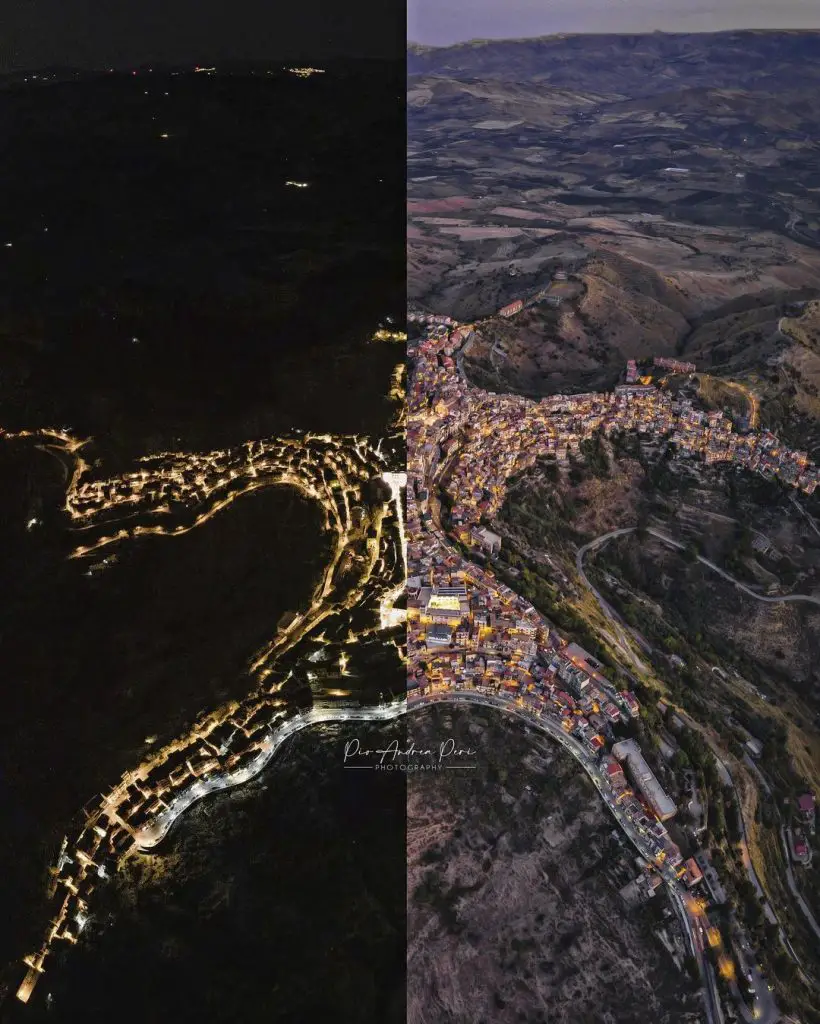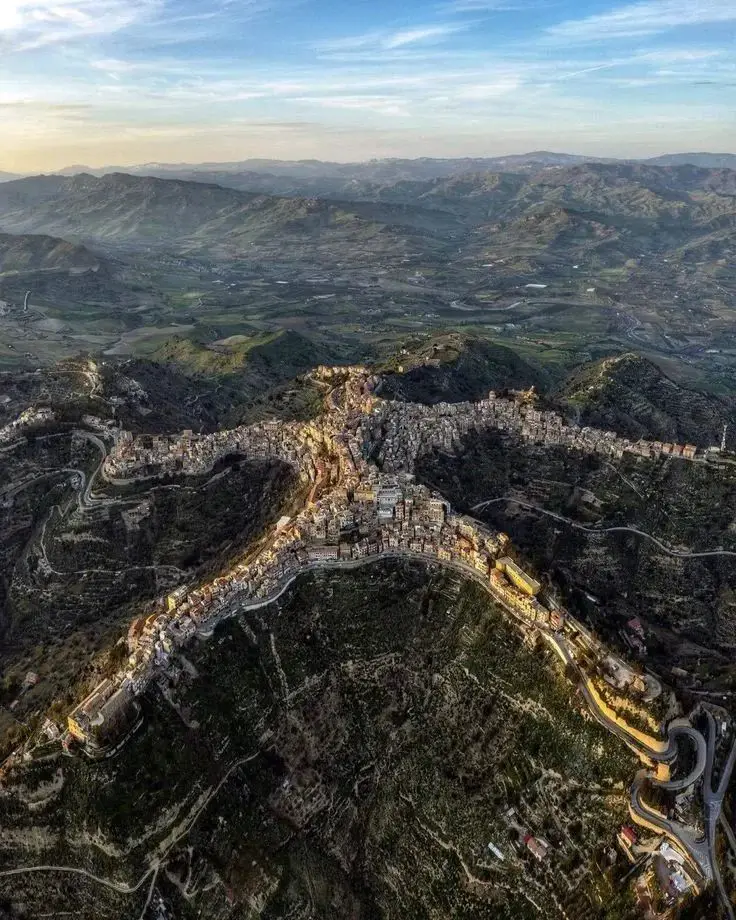Key Takeaways:
- Centuripe, a unique village in Sicily, stands out for its unusual shape resembling a person lying with arms and legs open when viewed from above.
- This “polylobate” urban plan has five branches extending from the town’s center, a result of the natural landscape’s influence on construction development.
- The village has a rich history, once being an ancient city allied with Athens against Syracuse and later taken over by Rome in the First Punic War.
- Centuripe’s archaeological remnants include Hellenistic houses with wall paintings, baths, and cisterns, along with a museum showcasing local artifacts.
- The village’s name likely originates from “Centum Ripae,” meaning “one hundred rocky coasts,” although alternative etymologies have been proposed.
In the heart of Sicily lies Centuripe, a captivating village with a peculiar layout that has captured the imagination of observers. Gazing down from above, one can’t help but see a human figure sprawled with arms and legs outstretched. With just around 5,000 residents, this hamlet rests in the province of Enna, boasting an urban design akin to a polylobate configuration – an arrangement where the town radiates in multiple directions from its core, resembling the branches of a starfish.
Yet, beyond its distinctive layout, Centuripe bears a historical significance that stretches back to ancient times. Once an ally of Athens against Syracuse, this city, known as Centuripae in antiquity, has witnessed the rise and fall of empires. From thriving independence to Roman conquest during the First Punic War, and from the ruinous impacts of conflicts to resilient rebuilding efforts, Centuripe’s story is etched into its architecture and cultural relics.
Unveiling the past, the village’s archaeological remains paint a vivid picture. Hellenistic houses adorned with intricate wall paintings, resilient baths and cisterns, and steadfast substruction walls from the Roman era grace its steep slopes. Preserving this heritage, Centuripe’s civic museum and the Palazzo Comunale house an array of artifacts, including finely crafted local vases and treasures exhumed from the region’s tombs.
As with many historical gems, Centuripe’s name carries an intriguing tale. While the conventional belief links it to “Centum Ripae,” denoting “one hundred rocky coasts,” linguistic nuances offer alternate narratives. Whether tied to the unique orography shaping its layout or the echoes of ancient languages, Centuripe’s name embodies layers of history waiting to be unveiled by those who tread its intriguing streets.
#1

#2

#3

#4

#5

#6

#7

#8

#9



